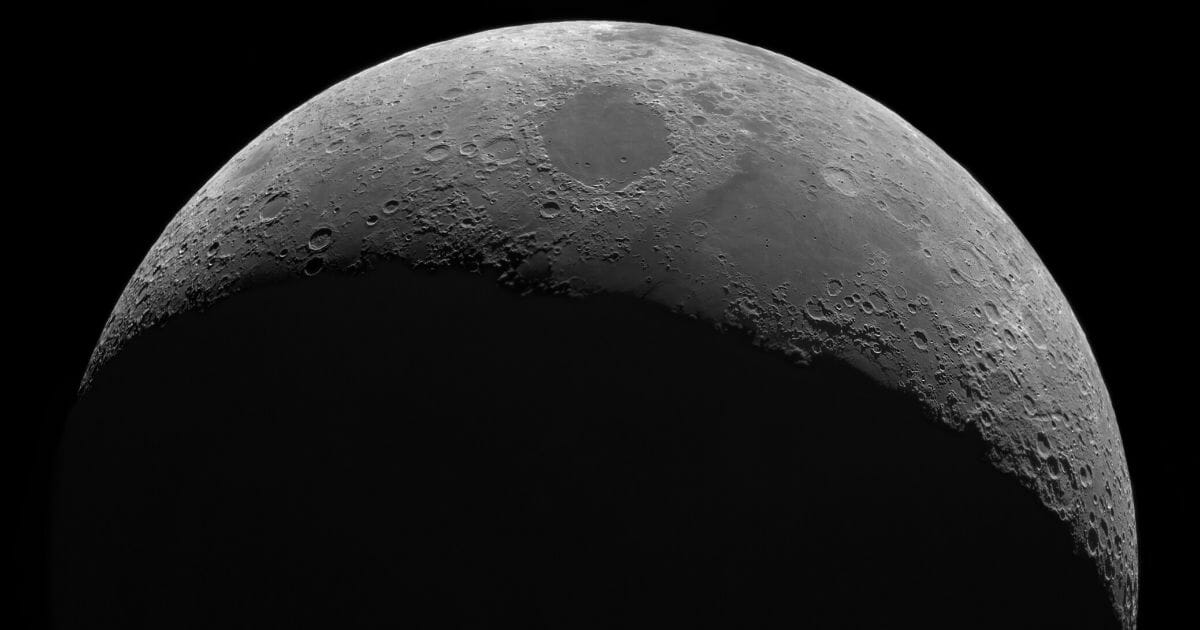
NASA Awards Grant Funding Concept To Turn Moon Crater Into Giant Telescope
NASA is considering a proposal to use a crater on the moon as a mammoth radio telescope that can be used to explore outer space.
The NASA Innovative Advanced Concepts program has approved funding for the initial research into the idea, according to NASA’s website.
The major attractiveness of a moon-based filled-aperture radio telescope is that it escapes the interference that is part and parcel of life on Earth.
As a summary of the proposal notes, “the Moon acts as a physical shield that isolates the lunar-surface telescope from radio interferences/noises from Earth-based sources, ionosphere, Earth-orbiting satellites, and Sun’s radio-noise during the lunar night.”
The project proposes to scan the cosmos at a radio frequency that has never before been possible.
“[The Lunar Crater Radio Telescope] could enable tremendous scientific discoveries in the field of cosmology by observing the early universe in the 10– 50m wavelength band (i.e., 6–30MHz frequency band), which has not been explored by humans till-date,” the summary said.
Radio telescopes exist on earth, but constructing one on the moon might be a challenge.
The proposal has an answer for that.
“We propose to deploy a 1km-diameter wire-mesh using wall-climbing DuAxel robots in a 3-5km-diameter lunar crater on the far-side, with suitable depth-to-diameter ratio, to form a spherical cap reflector.”
The result, the proposal said, is a 3,281-foot Lunar Crater Radio Telescope, making it “the largest filled-aperture radio telescope in the Solar System!”
The proposal is the creation of Saptarshi Bandyopadhyay, a robotics technologist at NASA’s Jet Propulsion Laboratory.
The concept was one of several approved by NASA’s Innovative Advanced Concepts program, which supports research that could one day lead to projects.
The Phase 1 award from NASA includes $125,000 toward the project and gives researchers nine months to determine its viability.
Another project approved came from Lynn Rothschild at the NASA Ames Research Center for what she dubbed an “Astropharmacy.”
“Disease is an inherent part of being alive, and thus disease prevention, diagnosis and treatment will be critical to human deep space missions. Pharmaceuticals are used to diagnose, treat, cure or prevent disease, but suffer from lack of stability on Earth and even more so in the space environment. What if small quantities of pharmaceuticals could be made in space, on site, on demand?” her proposal summary said.
The concept “removes concerns about pharmaceutical degradation due to time or radiation during space travel, and minimizes the resources needed to provide safe effective pharmaceuticals needed to keep crew members healthy.”
Rothschild said her proposal addresses the fact that drugs degrade over time, something that could be crucial to address before long missions such as a voyage to Mars.
“If successful in developing the Astropharmacy technology, the quality of astronaut healthcare will be improved by eliminating concerns of biologic drug degradation. Finally, such systems could have spin-offs for on-demand, on-site production of small quantities of other useful peptides/proteins in space, as well as on Earth, an economical path forward for orphan drugs, and improved stability for prototyping genetic circuits in cell-free systems,” her proposal said.
Truth and Accuracy
We are committed to truth and accuracy in all of our journalism. Read our editorial standards.
Advertise with The Western Journal and reach millions of highly engaged readers, while supporting our work. Advertise Today.












